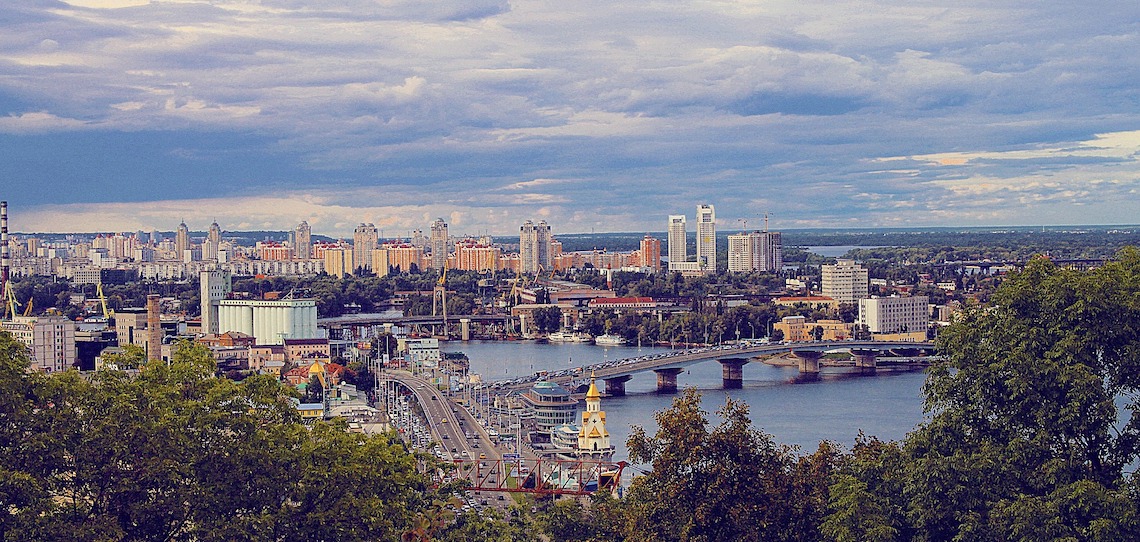While countries like France and Italy may be the heart of fashion in Europe, Ukraine has quietly become a fashion and manufacturing hub in Eastern Europe. The country has produced globally famous designers like Julie Paskal and Ruslan Baginsky, and serves as a manufacturing center for companies including Armani, Zara and Marks & Spencer.
But in recent weeks, the flourishing of Ukraine’s fashion scene, particularly its garment manufacturing, has been threatened by geopolitical conflict. The Associated Press reported on Wednesday that Russia, at the direction of President Vladimir Putin, sent tens of thousands of troops to the border between Russia and Ukraine in preparation for what many fear could be an imminent invasion. The reasons for this invasion are manifold and involve Russia’s opposition to the expansion of NATO into its sphere of influence in Eastern Europe. Russia has officially denied that the massing of troops signals an attack.
While military conflict would have many devastating effects beyond the impact on business, Ukraine’s growing apparel manufacturing sector would likely suffer. Textile exports from Ukraine grew in value from $30 billion in 2016, at a low point following a political crisis in 2015, to a $50 billion high in 2020. That growth led manufacturers and brands to move production to the country, favoring Ukraine’s geographic position between Europe and Asia, and some of the lowest production costs in Europe. But now, the crisis with Russia is raising concerns among those who have invested in Ukraine’s manufacturing sector.
“In the last few years, we started manufacturing in Serbia, Peru and Ukraine, in addition to Italy,” said Guido Campello, CEO of lingerie brand Cosabella. “But Ukraine has us concerned. The geopolitical situation there means it’s hard to plan too far ahead.”
In Peru, for example, Campello said his team has gone ahead on buying excess raw materials well in advance of anticipated needs. But for items sourced in Ukraine, the company’s put off purchases, in anticipation of a continued crisis and delays. The lack of advance orders and confident investment means Ukraine’s manufacturing sector will likely lose value in the coming quarters.
Ukraine is only a small part of Cosabella’s total manufacturing, with the majority being in Italy, but the company’s reliance on Ukraine-based production has grown in step with the country’s overall export growth.
Getting an exact read on how brands actually based in Ukraine feel about the situation is difficult. Ukrainian designers and retail executives contacted for this story, including Ruslan Baginsky, the owner of boutique Attic Koncept and designer Gasanova, declined to speak on the crisis. With the current situation being tense and uncertain, the designers and execs said they did not want to be criticized for any public statement on the political crisis in the country.
Manufacturing experts said that factories and local production are particularly vulnerable to geopolitical unrest.
“As humanitarian issues and geopolitical situations become more unstable, especially in regard to tensions between the U.S., China and Russia, supply chains will be directly impacted,” said Yossi Nasser, CEO of intimates manufacturer Gelmart. “Ukraine is an interesting indication for many other manufacturing hubs that are in potentially unstable geopolitical areas, like China and Myanmar.”
Myanmar is a model for what could happen in Ukraine. The country was on its fifth year of explosive growth in garment manufacturing, from $1 billion in 2011 to $6 billion in 2019. Then a military coup in February of 2021 saw production orders drop significantly and factories close down. Companies including H&M and Primark pulled production out of Myanmar and moved it to countries like Cambodia and Vietnam.
There are ways to protect against some of that inherent instability, Nasser said. For brands, one of the best options is to diversify where their clothes are made. Italy-based Benetton, for example, has moved its production from Asia to more easily accessible regions to avoid dealing with delayed global shipping.
“Companies definitely need to diversify, and those that haven’t have probably felt the supply chain impact since [the start of] Covid more than others,” he said.




